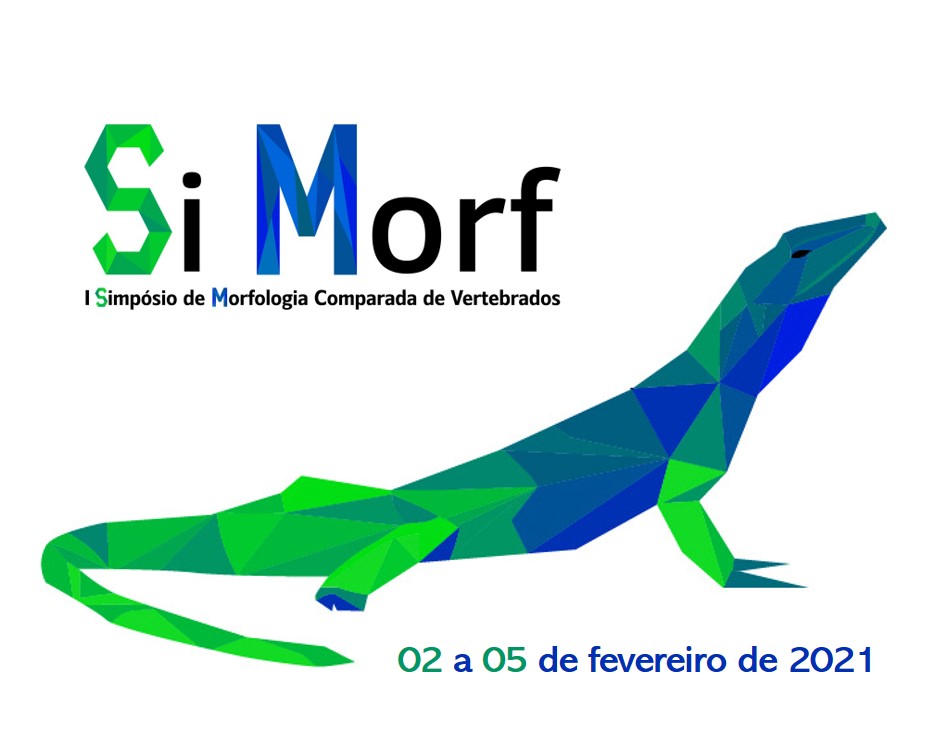Anais do I Simpósio Brasileiro de Morfologia Comparada de Vertebrados
Disparity patterns for megatherioid and mylodontoid sloths (Mammalia: Pilosa: Folivora).
Como citar esse trabalho?
Para citar este trabalho use um dos padrões abaixo:
Como citar esse trabalho?
- Tipo de apresentação: Apresentação Oral
- Eixo temático: Outra
- Palavras chaves: Disparity; Folivora; morphology; Morsphospace;
Autoras(es):
- 1 Universidade Federal de Minas Gerais
Disparity patterns for megatherioid and mylodontoid sloths (Mammalia: Pilosa: Folivora).
Daniel de Melo Casali
Universidade Federal de Minas Gerais
Agora você poderia compartilhar comigo suas dúvidas, observações e parabenizações
Crie um tópico- Tipo de apresentação: Apresentação Oral
- Eixo temático: Outra
- Palavras chaves: Disparity; Folivora; morphology; Morsphospace;
Autoras(es):
- 1 Universidade Federal de Minas Gerais
Sloths constitute a successful radiation of South American mammals, with posterior dispersal to Central and North Americas, including the Caribbean Islands. Representatives of the group are known from the Late Eocene to the present, but almost all species are currently extinct. Most of the taxonomic diversity of sloths is included in two major clades, Megatherioidea and Mylodontoidea. However, the patterns of morphological disparity for those clades remain understudied, and are investigated here.
We calculated a distance matrix using a cladistic morphological dataset with 429 characters for 38 megatherioid and 28 mylodontoid sloths. The distance matrix was ordinated with a Principal Coordinates Analysis to produce bivariate plots. We applied three disparity metrics, each for a different aspect of data distribution in morphospace - volume (Sum of Variances), density (Average Nearest Neighbour Distances), and displacement (Average Displacement). To assess significance for differences in disparity, data was submitted to 1000 bootstrap pseudoreplications and evaluated with a Wilcoxon Rank-Sum Test.
Our results show that the separation of Megatherioidea and Mylodontoidea in morphospace was mostly represented by PCoA1. In this axis, we also observed that Choloepus occupy an intermediate position between the two groups, but closer to the megatherioids. Megatherioidea and Mylodontoidea present significantly different patterns of morphospace occupancy, except for the density metric. The volume occupied by Megatherioidea is greater, whereas Mylodontoidea shows a greater displacement relative to the morphospace centroid. Further studies should be conducted to elucidate if those patterns of disparity can be associated with historical and/or ecological factors.
Caracteres
Nathália Siqueira Veríssimo Louzada
Muito interessante o trabalho de vocês, Daniel. Como foi a escolha e obtenção dos caracteres que você analisou? Haveria disponibilidade de obtenção de caracteres quantitativos também? Parabéns pelo projeto!
- 1 resposta
Discussões Científicas de Qualidade
Com ~200 mil publicações revisadas por pesquisadores do mundo todo, o Galoá impulsiona cientistas na descoberta de pesquisas de ponta por meio de nossa plataforma indexada.
Confira nossos produtos e como podemos ajudá-lo a dar mais alcance para sua pesquisa:
Como citar esse proceedings?
Esse proceedings é identificado por um DOI , para usar em citações ou referências bibliográficas. Atenção: este não é um DOI para o jornal e, como tal, não pode ser usado em Lattes para identificar um trabalho específico.
Verifique o link "Como citar" na página do trabalho, para ver como citar corretamente o artigo



Daniel de Melo Casali
Olá Nathalia! Obrigado pelo interesse no nosso trabalho.
Os caracteres utilizados são um subconjunto obtido de uma matriz de dados maior que está sendo utilizada para um outro estudo, que tem como objetivo revisar as relações filogenéticas das preguiças. Basicamente excluímos os caracteres que eram variáveis apenas na presença dos grupos externos.
Quanto a sua segunda pergunta, sim, é totalmente factível de analisar a mesma questão com caracteres contínuos, e uma questão intereressante seria explorar a congruência entre as fontes de dados, e a estabilidade dos resultados obtidos!
Mais uma vez obrigado pelo interesse =)